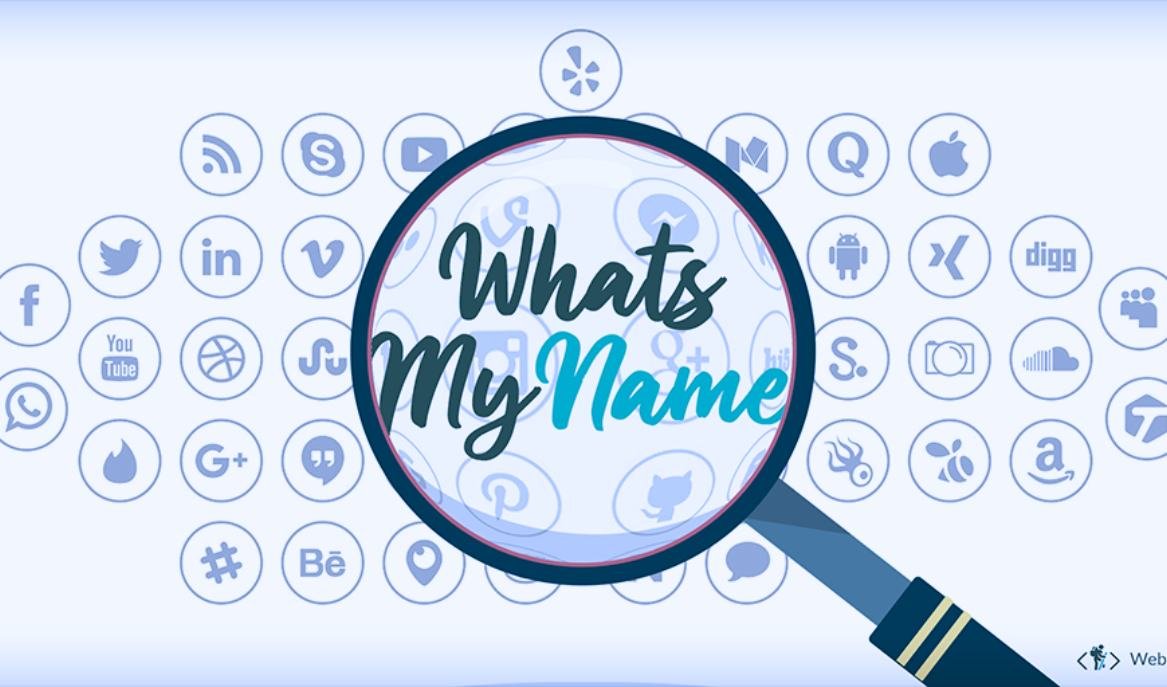If you’ve ever tried tracing a username across different platforms during an investigation, you already know how frustrating and time-consuming it is. This is where the WhatsMyName app becomes a choice. Created by OSINT expert Micah Hoffman, this tool lets you search for a single username across more than 500 websites in just a few clicks.
It’s designed for investigators, cybersecurity students, and ethical hackers who need fast, accurate, and publicly accessible results. Unlike shady scraping tools, WhatsMyName respects legal boundaries by only searching public data. That’s why it’s trusted in law enforcement circles, cybersecurity training, and open-source investigations worldwide.
Here, you’ll learn how to use the WhatsMyName.app, it’s safe to rely on, where it fits in real-world digital investigations, and what alternatives might be better suited for specific cases. You’ll also see its limits, ethical use cases, and why it remains a top choice for OSINT workflows in 2025.
What Is WhatsMyName App and Why Are OSINT Experts Using It?
It is a username enumeration tool built specifically for open-source intelligence (OSINT) tasks. It helps users determine where a specific username exists across hundreds of websites. From mainstream platforms like Instagram and Reddit to niche communities and forums, it searches a massive index and reports where that username is active, available, or already taken.
The tool was created by Micah Hoffman, a well-known figure in the open-source intelligence (OSINT) community. What makes WhatsMyName app different is that it doesn’t just run shallow checks. It uses platform-specific URL structures and status code logic to validate results with precision. This makes it highly reliable for digital investigators who need to know if a username is active on platforms without logging in or violating terms of service.
For OSINT learners, ethical hackers, and digital forensics professionals, this app serves as a gateway into multi-platform identity mapping. Whether you’re profiling a digital footprint or checking for alias overlaps, it saves time and reduces guesswork. It’s often included in professional OSINT training environments, especially in courses hosted by SANS, Trace Labs, and law enforcement academies.
How to Use WhatsMyName App: Step-by-Step Walkthrough
Getting started with the WhatsMyName app is surprisingly easy, even if you’re new to OSINT tools. The app is available both as a web-based interface and a GitHub project, depending on your technical comfort level.
For most users, the browser version is the fastest way to test a username. You simply visit the official website of the WhatsMyName app, enter the username you want to search for, and press Enter. Within seconds, the app scans across hundreds of platforms and returns results showing where that username is registered or available.
Each result includes a status code that helps you understand what the app found. For example, a 200 status confirms the username exists on that platform, while a 404 means it doesn’t. This method relies on how different platforms respond to user profile links, which makes the tool effective and legally safe.
If you’re more technical or want to run the tool offline, you can clone the project from its GitHub repository. The GitHub version is more flexible, allowing you to customize which sites to search or run batch queries through command-line scripts.
Many OSINT investigators start with the web version for quick checks and move to the GitHub tool when they need large-scale scans or offline capability.
Is WhatsMyName.App Safe to Use for Privacy-Conscious Users?

Yes, the WhatsMyName app is safe to use as long as it’s used ethically and for the right purposes. Unlike invasive tools that scrape private data or require login credentials, it only checks publicly accessible usernames through open URLs. It does not access any private databases or hidden content.
From a privacy standpoint, it doesn’t pose a risk to the person running the search. You’re not entering personal login details, and you’re not exposing your identity while using the tool. It simply sends requests to publicly structured URLs and checks the response to determine if a username is taken or not.
Legally, this tool falls under the domain of open-source intelligence (OSINT), which relies on publicly available data. That’s why it’s widely accepted in cybersecurity training, law enforcement workshops, and digital forensics labs. However, ethical use is critical. The tool is not meant for stalking, harassment, or any form of doxxing. Its creator and the OSINT community strongly discourage misuse.
Compared to some shady username lookup tools that sell user data or run background checks, WhatsMyName maintains a clean reputation due to its transparency, open codebase, and narrow scope. It’s a responsible choice for those who want to conduct username research without compromising ethical boundaries.
Real-World Uses in Cybersecurity and OSINT
The WhatsMyName app has become a go-to resource for OSINT professionals, cybersecurity teams, and even law enforcement agencies when it comes to tracking digital identities. It’s used not just for convenience but because it delivers real results in time-sensitive investigations.
One of the most common use cases is during threat intelligence and social media investigations. When analyzing online threats, security analysts often begin by tracing usernames associated with suspicious activity. WhatsMyName makes it easy to find if that same alias exists on Twitter, Reddit, Telegram, or even niche forums, allowing analysts to map a broader digital footprint.
In corporate investigations, cybersecurity teams may use the tool to assess if company-related usernames are being impersonated on other platforms. For example, spotting lookalike profiles during phishing or impersonation campaigns can prevent brand abuse and social engineering attacks.
Law enforcement officers have also used WhatsMyName in cross-platform investigations. In one case, an alias used in a Reddit post was found on a dating site and later linked to a username on a dark web marketplace. The consistent handle led to a breakthrough in identifying the user behind multiple personas.
It’s also used heavily in training programs. In SANS workshops and other cybersecurity bootcamps, learners use it to understand how aliases spread across platforms. This helps future analysts develop critical skills in online identity linking without breaching privacy laws.
Best Alternatives to WhatsMyName App in 2025

While the WhatsMyName app is a favorite among OSINT investigators, it’s not the only tool out there. Depending on your needs, whether you’re seeking more automation, faster speed, or additional data points, several strong alternatives are available.
One of the most popular options is Sherlock, a command-line based tool written in Python. Sherlock checks for usernames across hundreds of websites, similar to WhatsMyName, but it’s designed for batch processing and deep automation. It’s ideal for investigators who prefer working in terminal environments.
Another solid choice is Namecheckup.com, which offers a user-friendly browser interface. It’s more focused on brand username availability and is often used by marketers or social teams, but OSINT beginners appreciate its simplicity and fast response.
For more advanced investigators, Blackbird OSINT offers a more aggressive approach. It performs deeper recon on usernames, sometimes pulling profile details or associated metadata. It requires setup and is better suited for experienced users comfortable with scripting and configuration.
Each tool has its strengths. WhatsMyName wins for accessibility and browser support. Sherlock offers speed and bulk checking. Blackbird brings power, but with complexity. Your choice depends on whether you need quick checks, deep dives, or broad scanning.
Limitations and Risks – What WhatsMyName App Cannot Do
The WhatsMyName app is a powerful tool, but like any OSINT resource, it has limitations you need to understand before relying on it in critical investigations.
First, it can’t find deleted accounts or usernames on private profiles. If a user has recently removed their account, changed privacy settings, or uses different aliases across platforms, the tool may still return no results, even if the person is still online. This is a common challenge in username enumeration, and not unique to WhatsMyName.
Second, the app may occasionally return false negatives. Platforms frequently update their URL structures or restrict public profile visibility, which can break detection logic. While the tool is actively maintained on GitHub, real-time API changes on specific platforms can affect its accuracy until updates are pushed.
Third, WhatsMyName only works with usernames not emails, phone numbers, or other identifiers. It’s not a people search engine and shouldn’t be confused with tools designed for background checks or PII tracing. If you’re trying to investigate someone without a known alias, this tool won’t help much.
Finally, it doesn’t provide context beyond presence. It tells you if a username exists on a platform, but it won’t pull profile content, images, or associated activity. For deeper profiling, users often combine WhatsMyName with tools like SpiderFoot, Maltego, or manual investigation methods.
Understanding these boundaries is essential for ethical and effective OSINT work. No tool is complete on its own WhatsMyName is a great starting point, not a complete solution.
Who Must use WhatsMyName App, And Who Shouldn’t

The WhatsMyName app is designed for ethical use within well-defined roles. It’s essential to recognize who should use it and who absolutely shouldn’t.
This tool is ideal for OSINT investigators, ethical hackers, cybersecurity students, and digital forensic professionals who operate within legal and responsible frameworks. If you’re part of a red team, working in threat intelligence, or training in cyber awareness at a federal or DoD level, WhatsMyName can be a powerful asset in your workflow.
It’s also widely used by journalists, researchers, and compliance auditors who need to track usernames across social media for verification or risk analysis. The app is often referenced in educational settings, including workshops led by organizations such as the SANS Institute or Trace Labs.
On the other hand, this tool is not intended for personal surveillance, cyberstalking, or harassment. Anyone looking to misuse the app for doxxing, personal revenge, or targeting individuals without consent is violating both the purpose and ethics behind open-source intelligence.
Remember, just because data is public doesn’t mean it should be used carelessly. The value of tools like WhatsMyName lies in the integrity of the people using them.
Final Thoughts
For anyone working in cybersecurity, OSINT, or digital investigations, the WhatsMyName app continues to prove its value year after year. Its ease of use, open-source transparency, and wide platform coverage make it a reliable asset in modern identity tracing workflows.
Whether you’re just starting in OSINT or already part of an advanced cyber unit, the app offers a lightweight yet powerful way to identify usernames across hundreds of online platforms quickly. Its browser-based interface welcomes beginners, while the GitHub version gives power users complete control over batch searches and customization.
What makes it even more relevant today is the community behind it. The project is consistently maintained, trusted by instructors, and often featured in top OSINT training environments. In an era where username-based identity mapping is still one of the first steps in digital profiling, WhatsMyName holds its ground as a must-have utility.
That said, its effectiveness still depends on how you use it responsibly, ethically, and as part of a broader investigation toolkit.
FAQs
1. Is WhatsMyName.app safe and legal to use publicly?
Yes, WhatsMyName only checks public data and doesn’t access accounts or private info. It’s legal to use when applied ethically within OSINT and cybersecurity guidelines.
2. Can this tool tell me who owns a username?
No, WhatsMyName only confirms if a username exists on specific platforms. It doesn’t reveal personal identity or profile content behind the username.
3. What platforms does WhatsMyName work with?
It supports over 500 platforms, including major social networks, content forums, and niche services. The list is regularly updated on the GitHub repository.
4. Is there a mobile version, or is it available on the App Store?
There is no standalone mobile app. However, the browser version is mobile-friendly and works smoothly on smartphones and tablets.
5. What’s the difference between WhatsMyName and Sherlock?
WhatsMyName is browser-accessible and beginner-friendly. Sherlock runs on the command line, supports batch searches, and is preferred for automation and deeper control.






